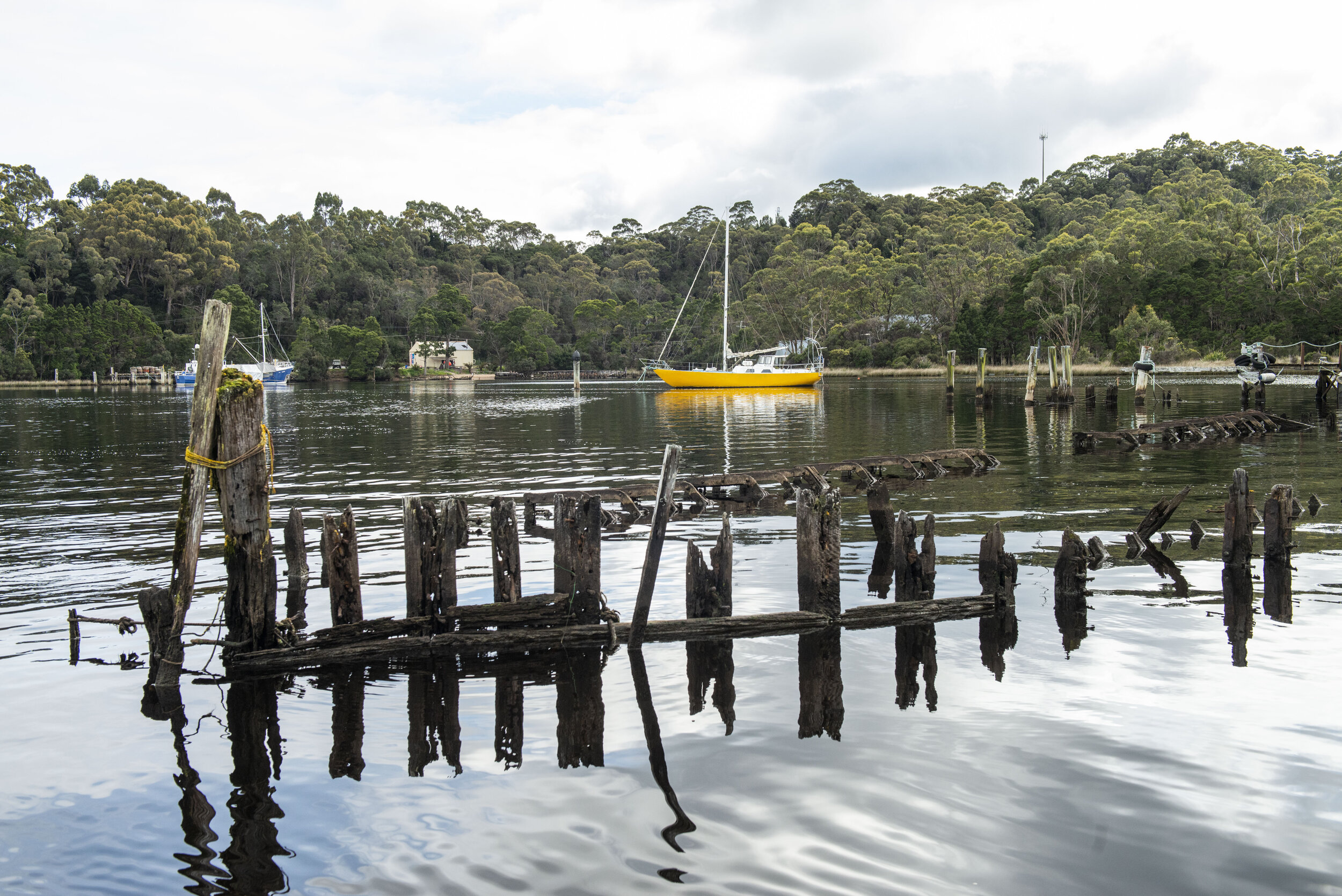
A Brief History of Risby Cove
Long before the suites were designed or the restaurant poured its first glass of wine, this cove held a different kind of life. This was once the site of the Risby Bros sawmill—a vital part of Strahan’s maritime and logging history. For decades, it stood as a symbol of industry and resilience on Tasmania’s remote West Coast. Today, while the saws have long since quieted, the stories remain.
Where it all began
Artwork from 1889 of the Risby sawmilling branch.
Risby Cove takes its name from Charles Wallace Risby, the younger son of the distinguished Risby timber merchant family. In 1889, Charles established a sawmilling branch along the sheltered northern side of Long Bay — today known as Risby Cove — at the head of Macquarie Harbour, the West Coast’s only protected deepwater port. During Tasmania’s mining boom of the late 19th and early 20th centuries, this harbour became a vital gateway for the transport of goods and people into the region's rugged interior.
As Strahan grew into one of Tasmania’s busiest ports, the Risby Bros helped shape its development, supplying prized Huon pine for the extension of the Strahan Wharf. When the wharf was rebuilt in 2001, several original timber cross-heads — remarkably preserved after more than a century of exposure to saltwater — were salvaged and now feature in the bespoke benchtops of Risby Cove’s restaurant, a lasting tribute to the strength and beauty of Tasmania’s legendary Huon pine.
The Legacy of Risby Bros
Strahan Wharf in 1890 built from timber supplied by the Risby Bros Sawmill.
The land on which Risby Cove now stands carries the rich imprint of its industrious past. Over the decades, the site hosted sawmillers, boatbuilders, and craftsmen, each leaving their mark on the waterfront. Remnants of this history are still visible today — including the weathered boilers at the creek’s edge, once used to power the original Risby sawmill, and relics of the tools that once helped haul logs from deep within the forests.
Through years of prosperity and challenge, including shipwrecks, fires, and the eventual downturn of the mining era, the spirit of resilience remained. In the late 1990s, the area was transformed, blending the lands’ rich heritage into a boutique hotel. Today, Risby Cove offers guests the rare experience of staying at the water’s edge, surrounded by the enduring stories of Tasmania’s pioneering past — and the timeless beauty of its natural landscape.
A New Chapter Begins
Following a rich history as the site of the Risby Bros. sawmill, Risby Cove enters a new chapter as a refined luxury retreat on Tasmania’s rugged West Coast. The reimagining of the property has been guided by a philosophy of quiet evolution: honouring the Cove’s storied past while elevating the guest experience through considered design, craftsmanship and connection to place.
What’s New
Risby Cove’s transformation introduces a range of thoughtful enhancements designed to elevate the guest experience while preserving the property’s unique heritage. In addition to the redesigned accommodations, new wellness amenities have been integrated, offering guests the opportunity to unwind in private cedar hot tubs overlooking Macquarrie Harbour or the adjacent rainforest.
The property’s architecture has also been refined to enhance the connection between the interior and exterior, with floor-to-ceiling double glazed windows and open, light-filled spaces that invite the natural beauty inside.







